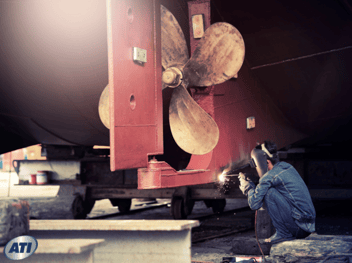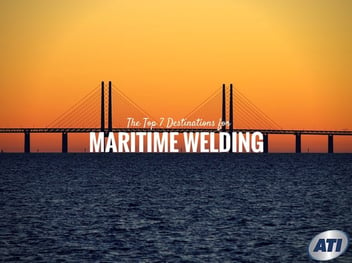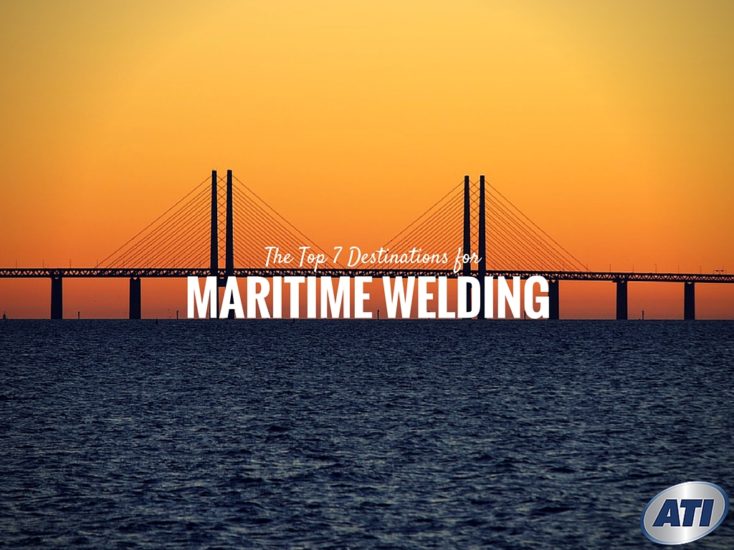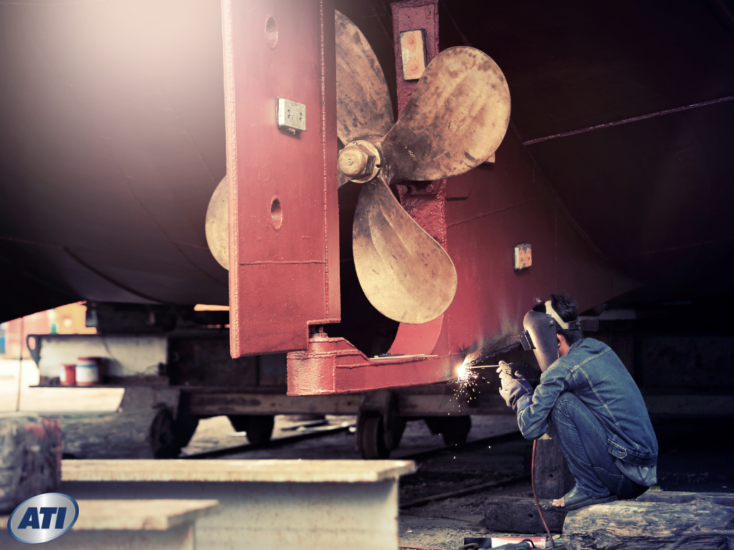Working in Welding: The Ultimate Welding Terms Glossary
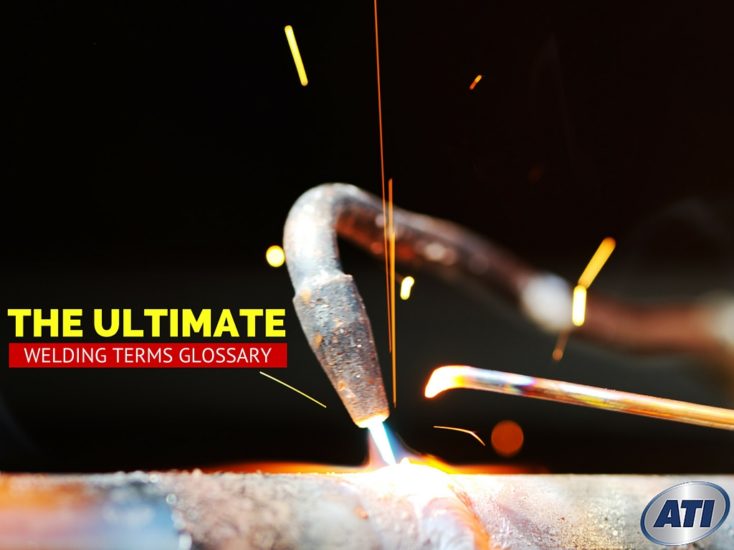
One of the best things about being a welder is that your skills are always in demand across different industries where basic welding skills are the same. Welders can be found working in manufacturing plants, building job sites, and rebuilding infrastructure such as bridges and highways. Being able to move from industry to industry offers a higher level of job security than many other types of jobs.
This versatility makes up for the fact that expected job growth through 2024 for welders is slightly lower than the national average for all occupations, according to the Bureau of Labor Statistics. It’s crystal clear though: welders that have been trained in the latest welding technologies will have a competitive edge over those who have not received this training.
If you’re considering working as a welder, it’s useful to know some terms you will hear during your training:
Basic Welding Terms
- Arc Voltage – the voltage that runs along the welding arc.
- Base Metal – the metal material that will be welded or cut.
- Bond – the joining of welding metal and base metal.
-
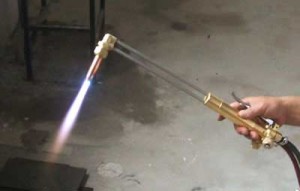
Cutting Torch
Cutting Torch – tool used in gas cutting to control the gases that are used for preheating and cutting metal.
- Goggles – safety equipment worn to protect the welder’s eyes from harmful radiation while welding and cutting.
- Helmet – protection equipment worn to protect the welder’s face and neck.
- Liquidus – the lowest temperature where metal becomes liquid
- Melting Point – the temperature that needs to be reached to allow metal to begin to liquefy.
- Melting Range – the range of temperatures between solidus and liquidus.
-
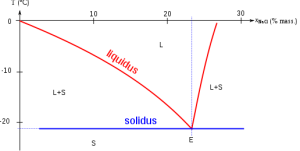
Liquidus
Solidus – the highest temperature where a metal remains completely solid.
- Tempering – process of reheating hardened steel below the lowest critical temperature and then allowing it to cool to make the steel stronger.
- Weld – a point where metals have been fused together by heating the materials to a suitable temperature. Filler metals or pressure may be used to accomplish the weld.
- Welder Certification – document certifying that the welder has made his welds according to the standards prescribed.
- Welding Torch – tool used for gas welding to control the flow of gases used.
Welding Materials
- Acetone – flammable and unstable liquid that is used to dissolve and stabilize acetylene.
- Acetylene – a highly combustible gas that is made of carbon and hydrogen that is used in gas welding.
- Alloy – a mixture of one or more elements with at least one being a metal.
- Electrode – various materials that are used to conduct the welding current between the electrode holder and the welding arc.
-
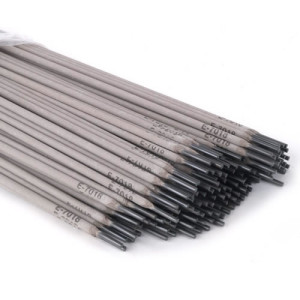
Welding Rod
Ferrite – a pure form of iron that exists below the lowest critical temperature.
- Flux – cleaner used to clean metals to be welded, soldered or brazed. It also dissolves rust and releases any trapped gases that may be in the metal.
- Nonferrous – metals that do not contain any iron. Examples of nonferrous metals include aluminum, bronze, copper, lead and titanium.
- Welding Rod – filler metal that comes in a rod or wire form and is used in brazing and gas welding or in arc welding where the electrode does not produce filler metal.
Welding Processes
- Arc Cutting – cutting processes where materials are cut by melting that is caused by the heat of the arc between the electrode and the metal.
- Arc Welding – welding methods where fusion is achieved by heating the materials to be joined using an electric arc(s). This may be done with or without filler material.
- Bare Metal-Arc Welding – an arc welding method where fusion is accomplished by using an unshielded arc to produce heat between a bare or lightly coated electrode and the material to be welded. The filler metal comes from the electrode and pressure is not used.
- Brazing – a welding method using a filler metal that is liquefied at a temperature above 800 F is distributed within a groove, flange or other type of joint and distributed through the joint via capillary action.
- Braze Welding – a welding process where the filler metal is liquefied above 842 F and beneath the base metals’ solid state.
- Carbon-Arc Welding – a welding method where fusion is created by an arc between a carbon electrode and the material to be welded.
- Gas Welding – a welding process where a gas flame creates the welding heat.
- Metal-Arc Welding – a welding process where the heat produced from an arc forms a weld by fusing a metal electrode and material to be welded together.
- Pressure Welding – a welding process where pressure is used to make a weld.
Is a former student I enjoyed my time at ATI with my education I landed a job at Toyota
Posted by Jordan Harris on Friday, August 14, 2015
Define Your Future: Become a Welder In As Little As 55 Weeks!
Have you considered becoming a welder as a possible career track? You could earn a Maritime Welding (Diploma) in as little as 55 weeks. Contact ATI today for more information and get started on your new career. Contact us at 800-468-1093 or request information today.
DISCLAIMER – Advanced Technology Institute (ATI) makes no claim, warranty or guarantee as to actual employability or earning potential to current, past or future students or graduates of any educational program offered. The Advanced Technology Institute website is published for informational purposes only. Every effort is made to ensure the accuracy of information contained on the AUTO.edu domain; however, no warranty of accuracy is made. No contractual rights, either expressed or implied, are created by its content.
Gainful Employment Information – Maritime Welding AOS Degree
Gainful Employment Information – Maritime Welding (Diploma)
For more information about Advanced Technology Institute or any of our programs click here: http://www.auto.edu/ or http://ow.ly/VoydP.
Industry Knowledge
Welcome to the Advanced Technology Institute's Blog, your resource for industry insights and discussions on technologies shaping the future of automotive, heavy vehicle, hvac, welding, and other related career paths.
Explore how ATI's curriculum and hands-on learning opportunities can propel your career in the tech-driven world.


